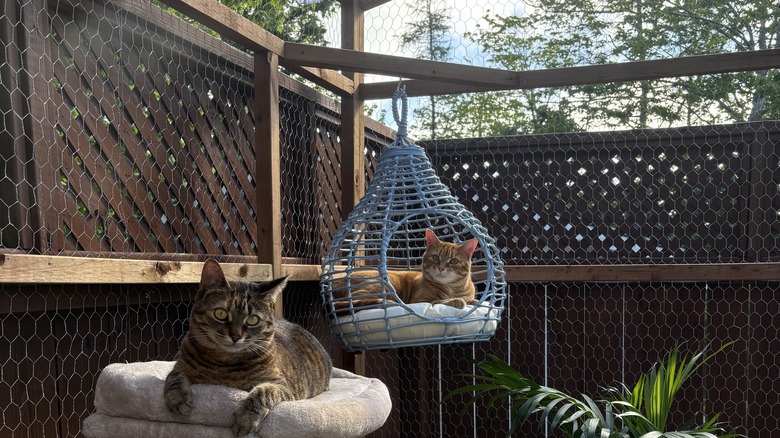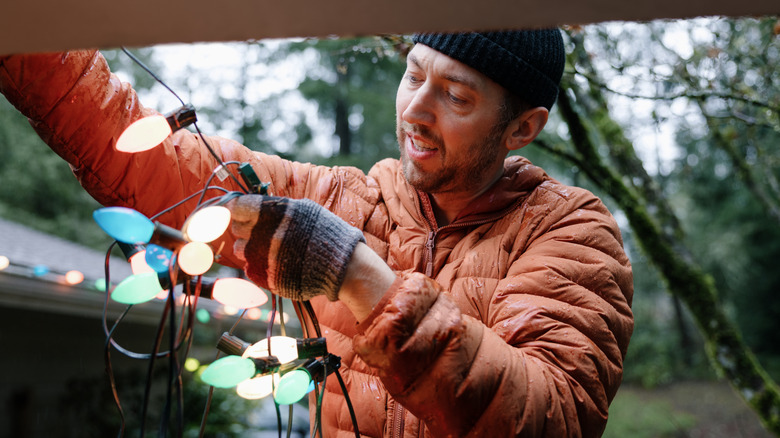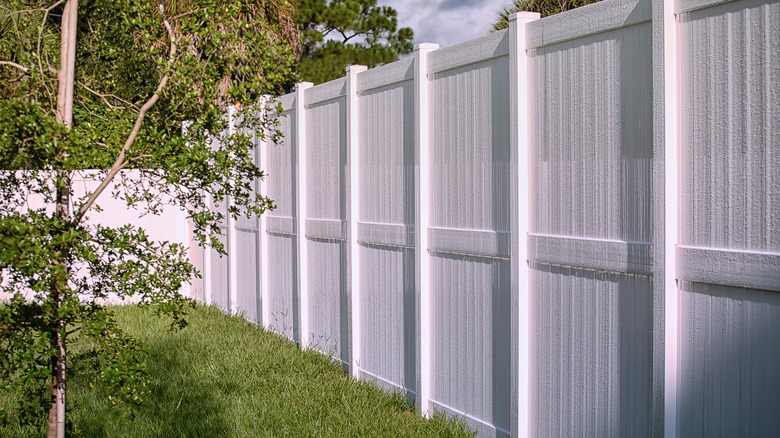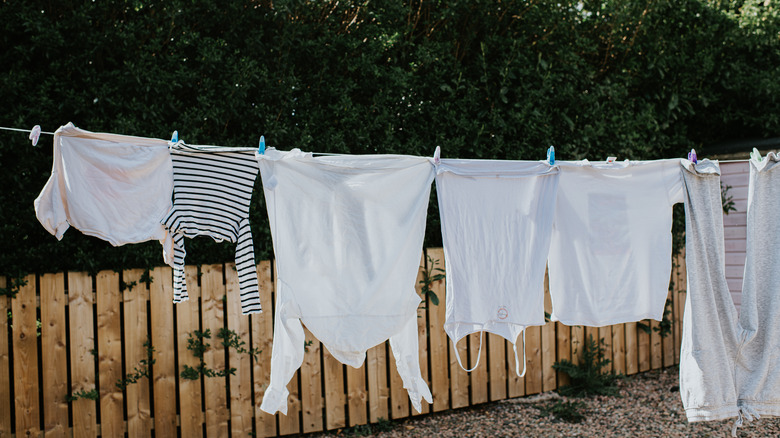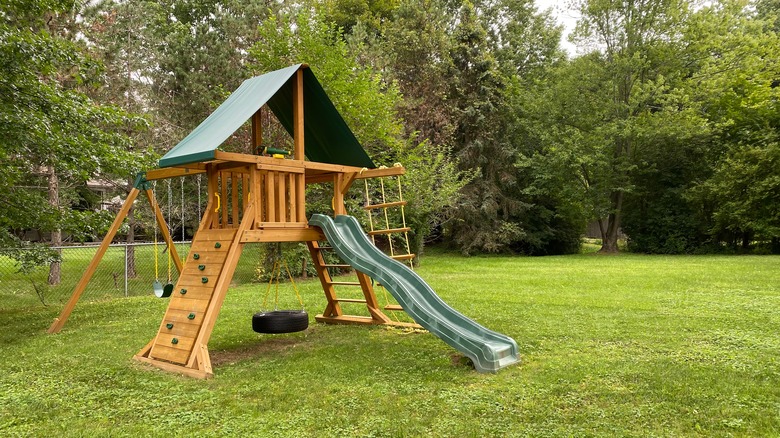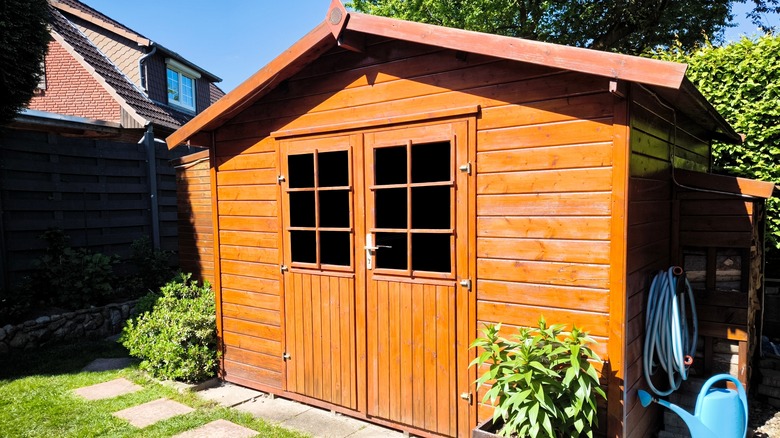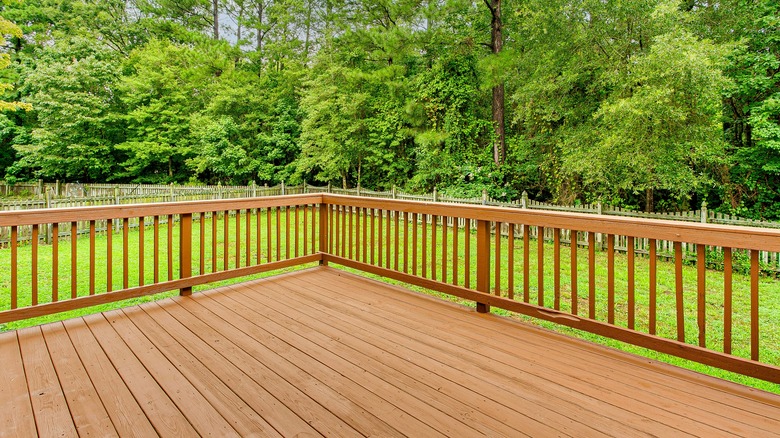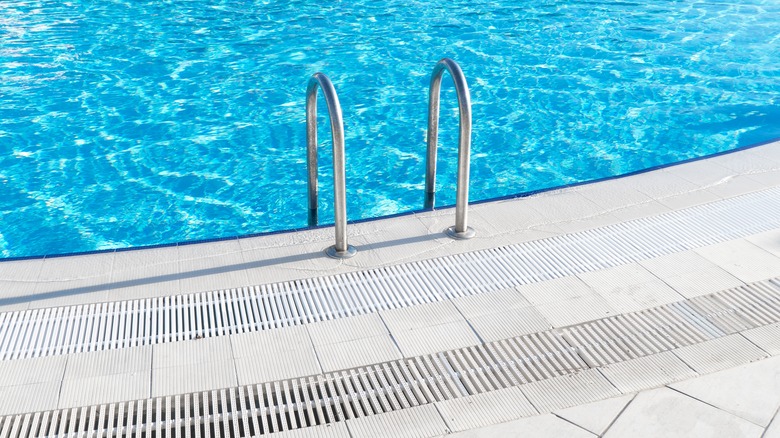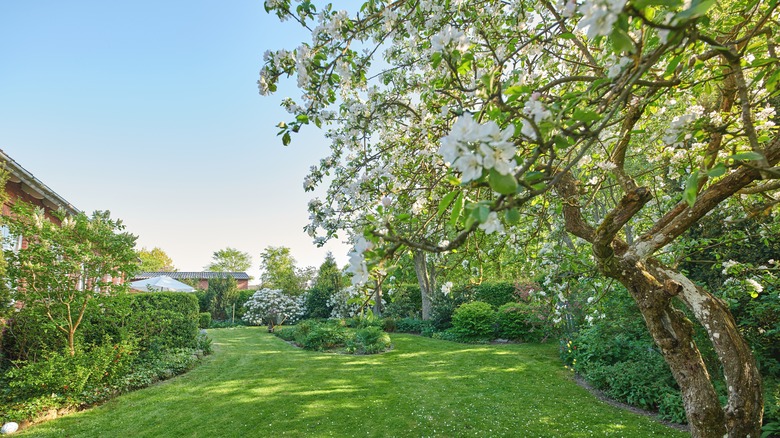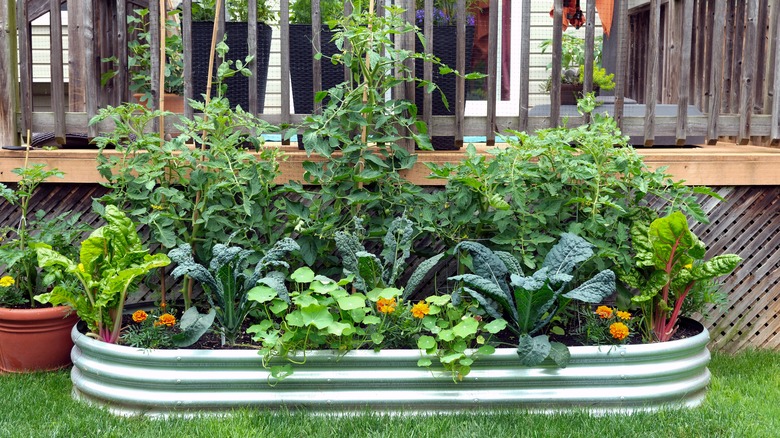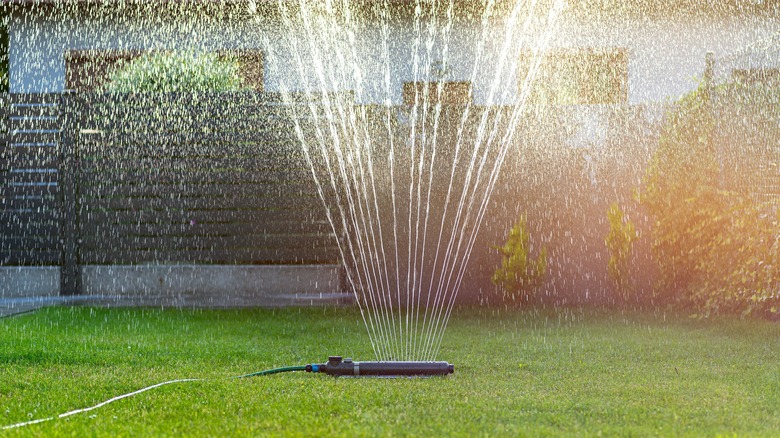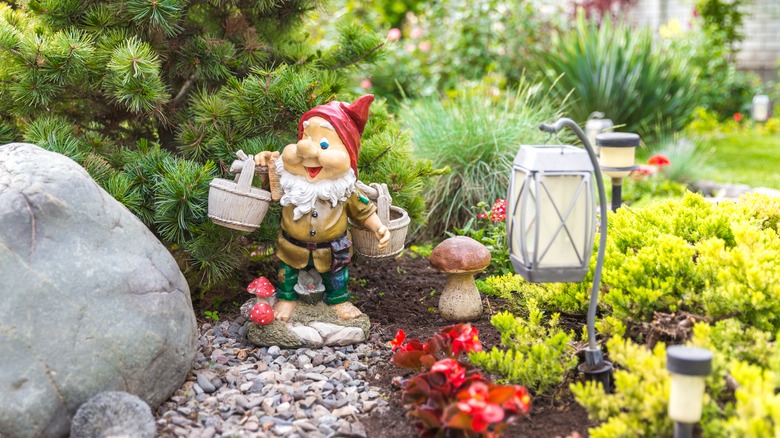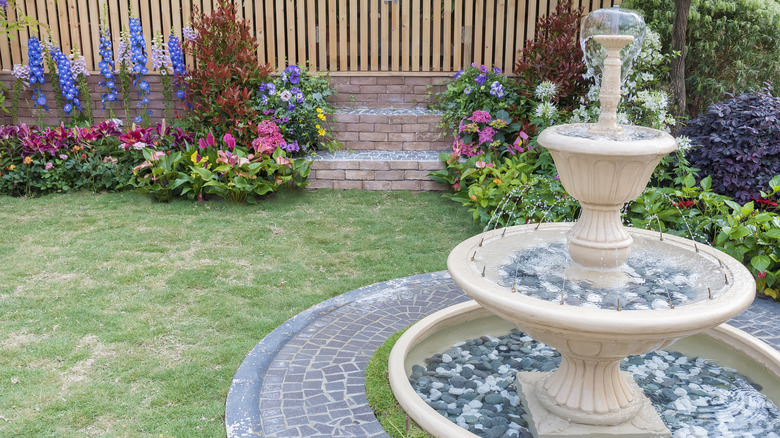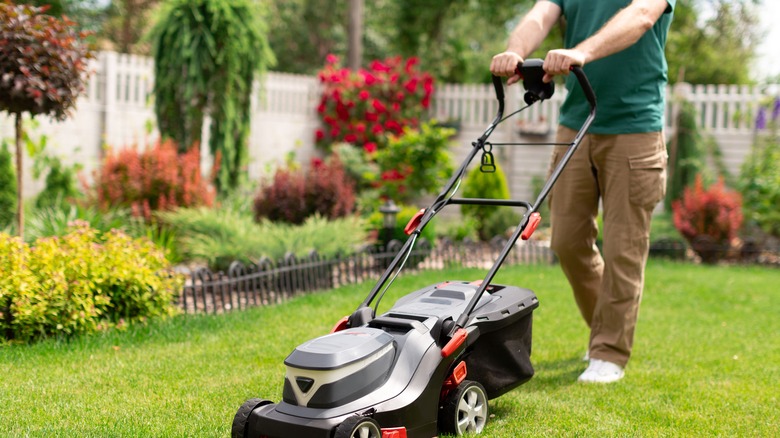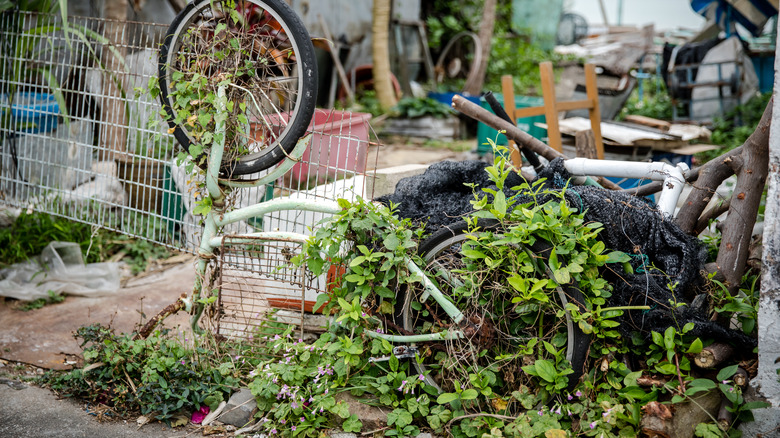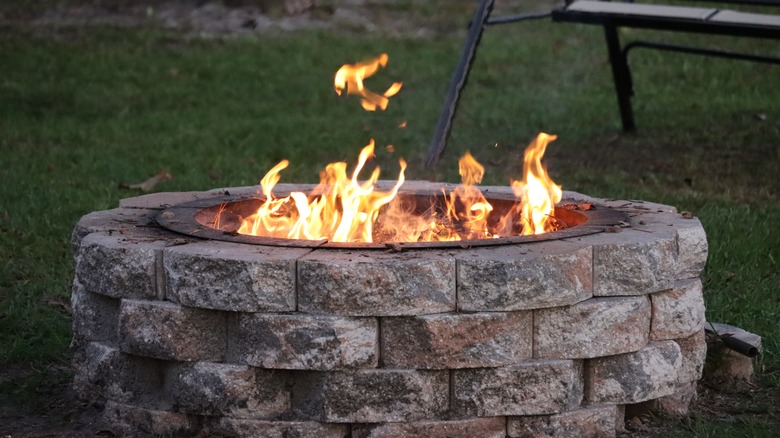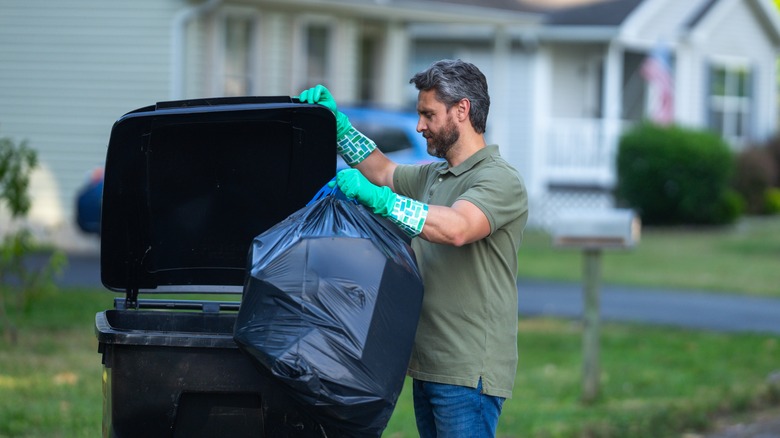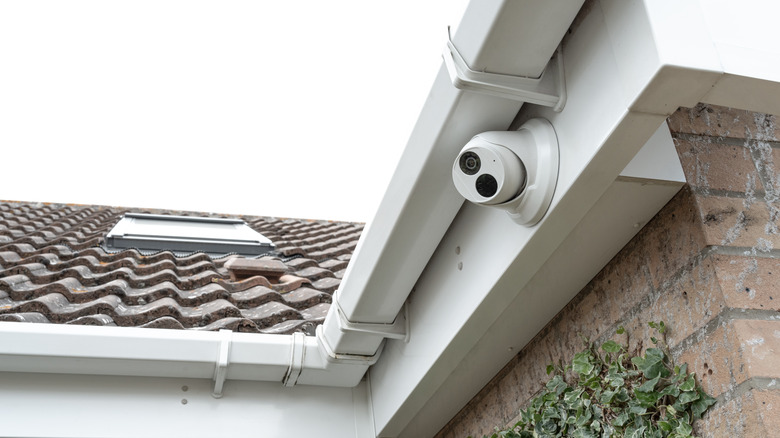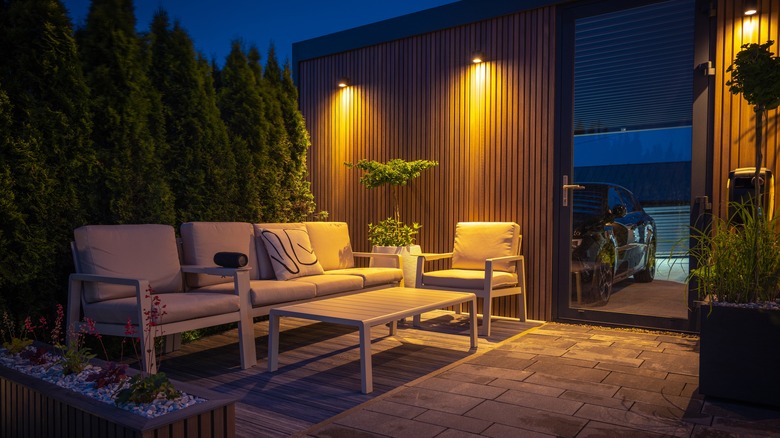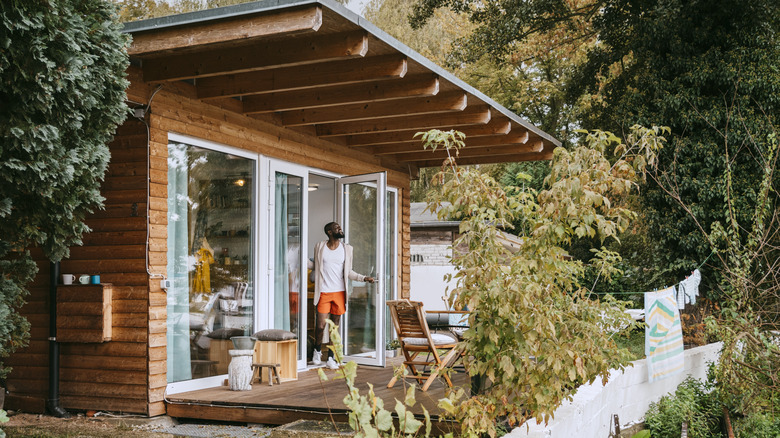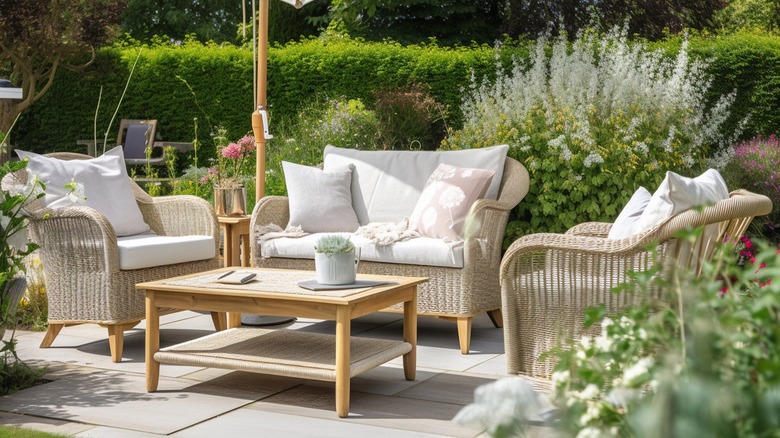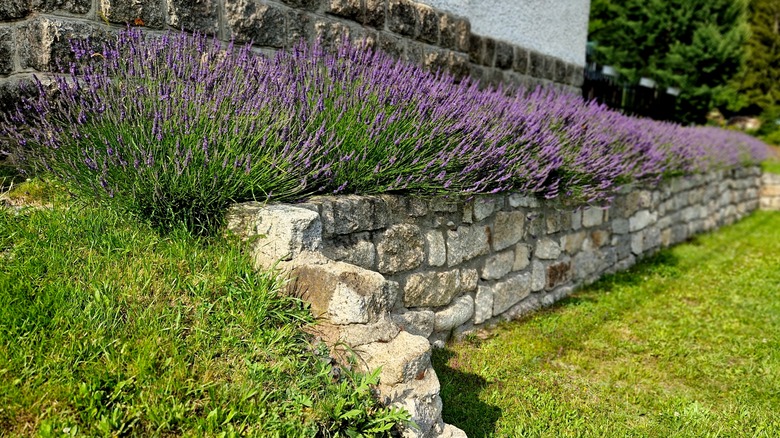24 Ways The HOA Could Be Affecting Your Backyard And What You Can Do About It
Your backyard may feel like a retreat, but if your home is a part of a homeowner's association, or HOA, the group may mandate exactly what can — and can't — go in it. Within the HOA's covenants, conditions, and restrictions (CC&Rs) are numerous regulations about your backyard's appearance and contents. Every HOA's rules are different, but most CC&Rs commonly cover outside structures, paint colors, and other items of concern. This means there are rules you need to know before building anything on your property, or else you could face fines and in some cases, legal action. The HOA can also require you to remove or revert your home back to its original state (i.e. before any alterations at your own expense). They take it pretty seriously, as some communities have even used satellite imagery, drones, and Google Map images to monitor homeowners' backyards for violations.
An HOA's aim is to have a "uniform" appearance for their community. They achieve this cohesive look by requiring its homeowners adhere to the various regulations it sets for installation, planting, and decorating around your property. And HOAs extend these rules to even the most private of areas, your backyard, which might not even be visible from the street. However, some states have laws that limit what HOAs can control and may limit. State law will then supersede HOA rules, especially for concerns like xeriscaping. Regardless of where you live, when you have an HOA, it pays to know what rules cover your backyard.
What type of pet enclosure you can have
Your home isn't the only home that needs to comply with your HOA's rules, your pet's home does too! An HOA can regulate pet enclosures, dog runs, kennels, and catios. It's common for the organization to mandate materials, size, height, and whether it's visible to the public. You will likely have to submit a request to your HOA with your design plans and specifics, and be prepared to make adjustments if needed for your furry friend's new digs.
The size and style of your holiday display
Don't think you can embrace your inner Clark Griswold with thousands of lights this holiday season if you're new to an HOA community. One of the most regulated aspects for HOAs is holiday displays. Your HOA may outline when you can start decorating, what you can and can't use, how long your decor can stay up, and if it can feature noise or sound effects. It's possible they may even state approved light colors. Before erecting a grand holiday display, check HOA rules so you can keep your holidays merry and bright.
Fences and aspects of the design
Many homeowners might want to put up a fence, but are blocked by HOA guidelines. An HOA can typically determine a fence size, height, color, style, and distance from a property line. Some HOAs may forbid chain-link fences, and require those made of vinyl or wood. Before you invest time and money in a new fence, check your CC&Rs and state law to ensure your fence meets the requirements, or you may face fines and forced removal. Depending on your community, you also may need to apply for pre-approval for your fence.
The right to solar drying
Grandma might have dried her clothes outside, but whether you're allowed to solar dry can depend on your HOA as well as your state. A total of 19 states have "Right-to-Dry Laws," which prohibit clothesline bans within an HOA. These states include Wisconsin, Florida, Hawaii, and California, which makes any HOA bans in the practice unenforceable.
Your children's play structures
What's more fun for children than a backyard playhouse? Well, your HOA might not agree, meaning you may need approval for play structures like a swing set or jungle gym. The guidelines often state an approved distance for the structure, as well as its size, color, and location. Luckily, most play structure companies have experience working with an HOA and will help you find the right custom-built options that can meet your community's requirements.
What plants you have
A trip to a nursery after moving into a new HOA community might require a check of the CC&Rs. HOAs can (and often do) list what types of plants are allowed within the community. It's common that they may forbid invasive species, such as bamboo, but they can go beyond those requirements. A community might have its own "approved plant palette" where they list what may be planted or added to your home, even in the backyard.
If you can have a shed and its appearance
There are numerous benefits to small outdoor sheds, but to an HOA, it can be an eyesore. You'll often need approval for a shed, with options that adhere to their guidelines for size, placement, and materials. They can even ask you to have the shed feature a certain exterior color and trim to better match your home. While it may seem enticing to buy a shed kit at a local big-box store, hold off until you've checked the community rules.
The presence of patios and decks
Patios and decks are of special interest to HOAs because they require structural changes to your home. You must follow their size restrictions, as well as approved materials. Deck building companies advise you never build a deck without HOA approval, warning of fines and also having to tear your deck down at your expense. The guidelines might also apply if you want to remodel an existing deck. Working with a deck company, you can create a sample design, for approval by your HOA.
Permission and standards for pools or hot tubs
Your backyard may not make a splash without HOA notice! Communities often have stringent requirements for pools and hot tubs. They may deny them altogether as well, especially above-ground models. Of course, you're also bound by the state and local requirements for pools, so making a thorough scan of the CC&R's as well as the residential building codes is a must before adding a backyard pool. One way to add a pool may be checking HOA requirements specifically for "swim spas," a combination of the features of a pool and hot tub.
What trees you can plant and how to care for them
Trees can bring a lot of contention in communities, as they can potentially increase the risks of pests, block sunlight, and shed leaves or fruit in homes' yards. As you can imagine, HOAs don't let you go out on a limb when it comes to planting trees. They can require you to engage in regular tree trimming plus require you hire a professional tree service rather than doing it DIY.
If you can have a vegetable garden
You may love the idea of having your own backyard garden, but the HOA might not be as keen. Communities routinely limit or forbid personal gardens, even in a backyard. They may dislike the required upkeep, the effect on resale, or the potential of attracting nuisance wildlife. Before planting your own garden, read the bylaws. They might specify you can grow herbs, but not vegetables or fruits. Some workarounds you could try would be growing on your windowsill or reaching out for permission for edible ornamentals and native plants.
How you water your lawn and how much
Even backyard watering practices can be subject to monitoring by the HOA. Many HOAs won't allow above-ground sprinklers and instead mandate irrigation systems. They can also require operation during certain times to avoid overwatering. Another provision could regard rainwater collection, including methods and locations. You may be interested in xeriscaping for water conservation, but the HOA may disallow these low-maintenance setups, unless you live in a state that protects them. For instance, Texas, California, Nevada, and Florida all allow residents to set up a xeriscaping landscape, with specifics varying by state.
What decorations you have
From garden gnomes to basketball hoops, HOAs can have an opinion on the decorations in your backyard. Specifications may include whether the item is visible from the street or neighbors' homes, how many decorations are present, and the types. Your new backyard decor can seem like a harmless fun addition but it may be an eyesore to them, so request permission or check your documentation before adding anything new.
If you have a water feature and what type
Though often a calming and visually-appealing addition to a backyard, water features can sometimes be forbidden by HOAs. Fountains, ponds, and waterfalls can attract mosquitoes so your HOA may not allow them, or only allow a water feature of a certain size. There may also be a requirement for how they look and what circulation systems they use. Always check your community requirements, plus those of your local area, to keep your new addition in the clear.
The appearance of your backyard
The lawn maintenance of your front yard is under HOA regulations, but the backyard can be too. HOA rules can include mowing frequency, grass height, mulching requirements, pest control, and other aspects that help you keep a healthy yard. You should carefully review all lawn maintenance regulations to avoid fines. You may even consider hiring a lawn maintenance company to ensure you comply.
What's considered an eyesore
Nothing brings down the uniformity of a community like cluttered backyards in the eyes of your HOA. They may view clutter as anything from a bicycle to sports equipment, like a soccer net, in your backyard. Discarded toys or lawn care equipment may also be considered clutter, so they may require storage. Avoiding fines and warning letters means you'll need to regularly review any clutter guidelines within the CC&R and follow them.
Fire pit presence and type
Fire pits are an understandable concern as they pose a safety risk. Some communities forbid residents from adding a fire pit to their backyards, while others only allow those using gas or propane. They can also require wind guards to reduce the chance of the flames escaping and turning into an inferno. Whether you want to use your fire pit for entertaining, roasting smores, or just for enjoying the cooler weather, check the CC&R to ensure you're allowed one in your yard. You can then be sure you buy the right model and any needed accessories.
Trash and disposal practices
Your home is likely bound by state and local law for trash cans, but it's also subject to governing by the HOA. The organization may be concerned about trash can visibility, so you'll have to store your trash can in your backyard. They may also dictate when the cans can be on the curb and for how long. Even the type of trash can you use is subject to their concern. For example, your community may require raccoon-proof models.
What security cameras you have and where
On the surface, it might seem like HOAs would be happy to see their residents put up a security camera, but the truth is more complicated. HOAs can request you remove a security camera, often because it can be part of the architectural requirements of a home. They may hate the appearance of security cameras, or specify where you can place them, plus where they point. If in doubt, check your CC&R or ask the association for guidance.
If chickens are permitted
Your HOA can get clucking mad about your new backyard addition if it has feathers and lays eggs. The organization can often mandate what types of pets you have, so their authority usually extends to backyard livestock as well. Cited reasons include the potential for frequent noise, odors, concern for disease, and the need for a chicken coop. This topic is still in flux, however, as more states like Missouri move to forbidding HOAs from enforcing backyard chicken bans.
Type and style of lighting
It can be lights out if your HOA doesn't agree with your exterior lighting choices. You may want bright outdoor security lighting, but the HOA can be concerned with "light trespass," or how much light shines on adjacent properties. Guidelines can include how bright the light is, as well as what direction it shines, even in your backyard. Hiring a professional lighting service that knows all of the available options that can fit within these requirements is likely the right choice if you want to add lighting to your backyard.
The presence of an ADU
Affordable Dwelling Units, or ADUs, have grown in popularity over recent years. These secondary housing units in your backyard definitely fall under the HOA purview, and they can prevent you from adding one. Some reasons include noise, privacy, and lower property value. Before you even start planning an ADU, check with your HOA for whether ADUs are allowed and if so, what requirements they have. Some states have ADU-friendly laws. While California and Florida forbid the HOA from banning them, they can still mandate specifics, such as size, location, and style.
Outdoor furniture size, type, and materials
Expanding how you use your backyard can include adding new furniture, yet the HOA might have a say. Guidelines can encompass the approved furniture type, materials, and style so as to keep an orderly appearance in the community. Anything that's broken or worn, such as a weathered table, may be subject to a notice for removal. Save yourself the time and trouble of needing to remove furniture by ensuring you meet the standards. This is especially important for anything like large pieces of furniture, such as a dining set.
Hardscaping
A retaining wall or gravel bed can fall under HOA guidance, meaning that you will have to get permission before you install one. Even something as simple as the type of border stones you use for a garden bed may require approval. Scan your regulations for any language on location, size, drainage and material requirements to keep the HOA off your back. You should also expect to submit plans for approval.

